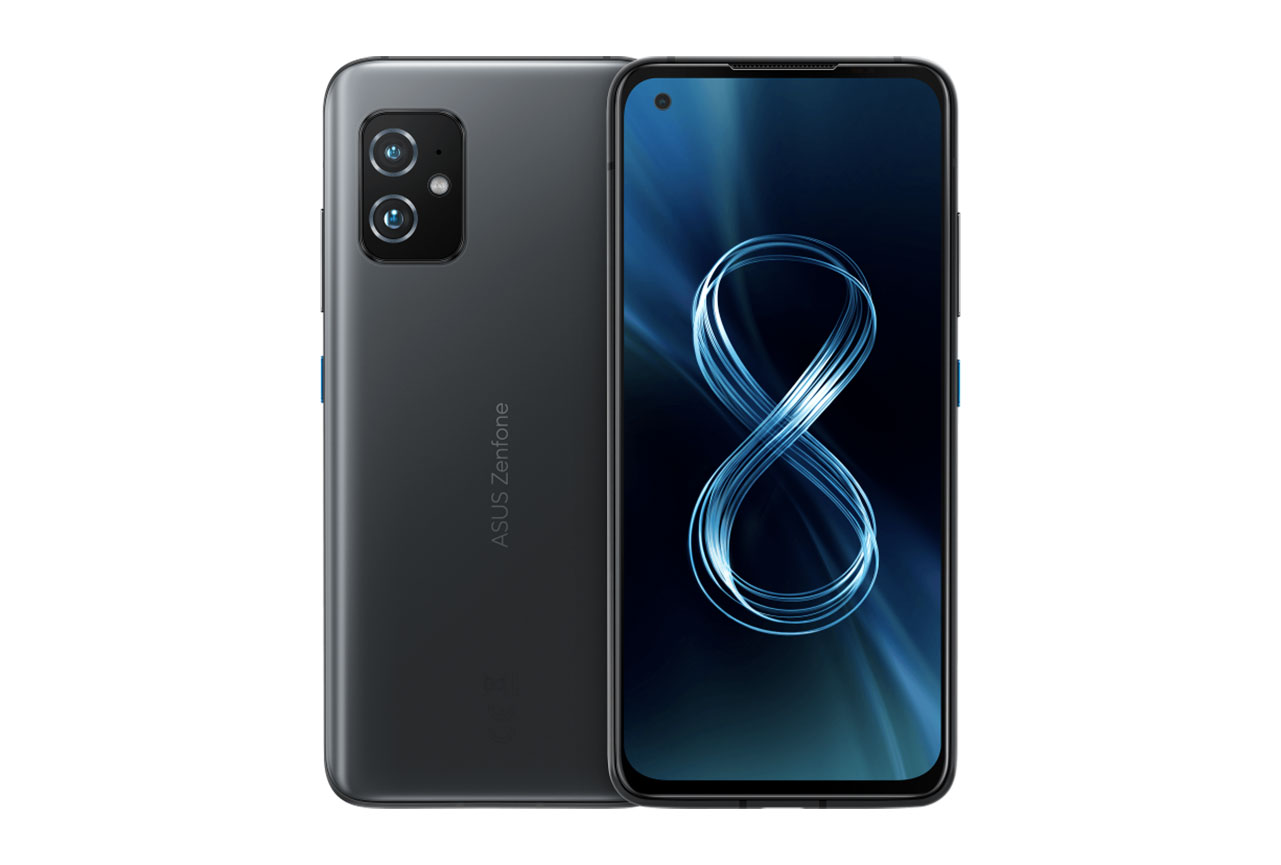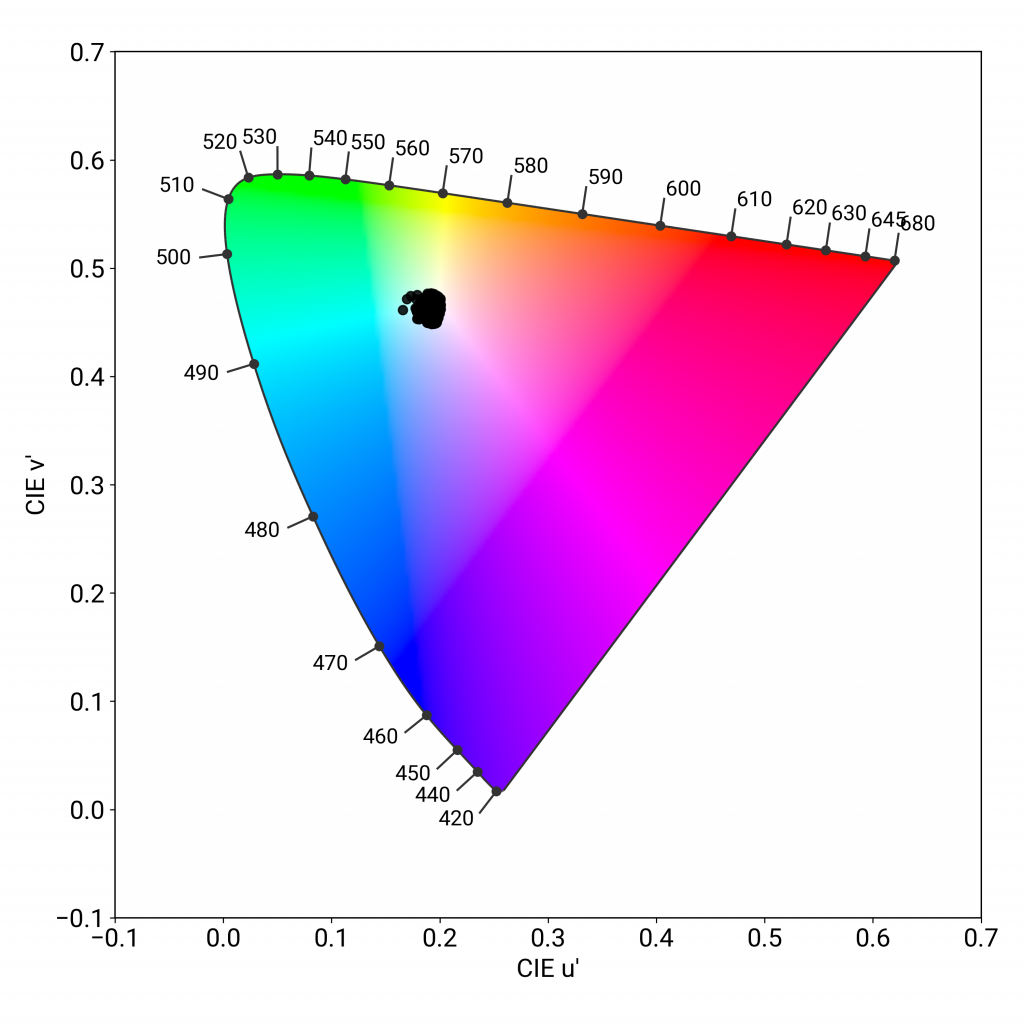Appearing on the market in May 2021, the Asus Zenfone 8 comes with a powerful Qualcomm Snapdragon 888 processor and a triple camera setup. Let’s see how well it performed in our Display protocol tests.
Key display specifications:
- OLED screen
- Size: 5.9 inches (84.2% screen-to-body ratio)
- Dimensions: 148 x 68.5 x 8.9 mm (5.83 x 2.70 x 0.35 in)
- Resolution: 1080 x 2400 pixels
- Aspect ratio: 20:9, 446 ppi
- Refresh rate: 120 Hz
About DXOMARK Display tests: For scoring and analysis in our smartphone and other display reviews, DXOMARK engineers perform a variety of objective and perceptual tests under controlled lab and real-life conditions. This article highlights the most important results of our testing. Note that we evaluate display attributes using only the device’s built-in display hardware and its still image (gallery) and video apps at their default settings. (For in-depth information about how we evaluate smartphone and other displays, check out our articles, “How DXOMARK tests display quality” and “A closer look at DXOMARK Display testing.”)
Test summary
Scoring
Sub-scores and attributes included in the calculations of the global score.
 Asus Zenfone 8
Asus Zenfone 8


Pros
- The device manages frame drops quite well when playing video games and watching videos.
- The device has smooth and accurate touch, leading to a pleasant user experience.
- The device screen is uniform in terms of both brightness and color.
Cons
- The device lacks brightness both indoors and outdoors; conversely, it is too bright at night in a low-light environment.
- Watching HDR10 videos would be improved with higher brightness.
- The device does not smoothly adapt to falling light levels, showing noticeable steps.
The Asus Zenfone 8’s global score of 81 places it right at the border between first-tier and second-tier devices in our Display protocol database. Although it posts good scores in the protocol’s motion and touch attributes, it is held back by low scores for readability and especially for artifact management. Let’s take a closer look.

Readability
Asus Zenfone 8
61
76
DXOMARK uses the device’s gallery app to show static (still image) content when measuring the device’s display for brightness, contrast, gamma, and blue light impact, etc.
Being able to easily see content in different ambient light conditions — the readability — is of primary importance. While the newest Asus device provides much better readability than its brand-mate, the ROG Phone 3 (at 53 points), it nevertheless lands in the lower half of our database for this attribute.
First off, the Zenfone 8 is rather too bright in low-light conditions. In all other conditions, however, it lacks sufficient brightness. The photo array below illustrates that lack of brightness, even though dark details are still visible.

Whether in shade or in sunlight outdoors, however, the Zenfone 8 is bright, but darker shades do not stand out:
The comparison shots below illustrate low readability outdoors in sunlight:

The Zenfone 8 is not at all smooth when adapting to falling light conditions, showing noticeable steps.
As with many smartphones when viewed at an angle, the Zenfone 8 loses brightness and details in dark areas.
Brightness on axis:

Brightness on axis, from left to right: Asus Zenfone 8, Asus ROG Phone 3, Sony Xperia 5 II, Apple iPhone 12 Pro
Brightness on angle:

Brightness at 45° angle, from left to right: Asus Zenfone 8, Asus ROG Phone 3, Sony Xperia 5 II, Apple iPhone 12 Pro
One plus is that the Zenfone 8 is uniform in brightness, earning a comment of “excellent” from our engineers. And with the blue light filter (BLF) on, the device is perhaps a tad too bright, but is quite readable.

Color
Asus Zenfone 8
82
92
DXOMARK uses the device’s gallery app to show static (still image) content when measuring the device’s display for white point, gamut, uniformity, color fidelity, and blue light filter impact, etc.
The latest Asus device does not adapt its white point to ambient light conditions. Indoors, a yellow cast is visible…

Color rendering indoors, from left to right: Asus Zenfone 8, Asus ROG Phone 3, Sony Xperia 5 II, Apple iPhone 12 Pro
…which only becomes more pronounced in outdoor photos.

Further, when moving from on-axis (frontal) to an angle view, the Zenfone 8’s color cast alternates between pink and blue, as shown in the scatter chart on the right below:


Here you can see Asus Zenfone 8 on axis:

Color rendering on axis, from left to right: Asus Zenfone 8, Asus ROG Phone 3, Sony Xperia 5 II, Apple iPhone 12 Pro
The Zenfone 8’s color rendering is noticeably different at a 45° angle:

Color rendering at 45° angle, from left to right: Asus Zenfone 8, Asus ROG Phone 3, Sony Xperia 5 II, Apple iPhone 12 Pro
Again, the Zenfone 8 shows excellent uniformity, this time for color.
When the BLF is turned on, the Zenfone shifts to a quite noticeable yellow-orange cast (though not as intrusive as the Sony or the Apple, as shown below).

BLF on, from left to right: Asus Zenfone 8, Asus ROG Phone 3, Sony Xperia 5 II, Apple iPhone 12 Pro

Video
Asus Zenfone 8
71
91
DXOMARK uses the device’s video (or browser) app to show dynamic content when measuring the device’s display for brightness, contrast, gamma, and color.
The Zenfone 8 once again posts a big improvement over the ROG Phone 3 (52 points) in this category. However, as illustrated in the comparison video grabs below, the Zenfone 8 lacks brightness when playing HDR10 content. Although it renders midtones fairly well, especially for skin tones, there is a certain flatness to the rendering of more saturated content. That said, a plus point is that there are no noticeable color casts.

Video brightness, from left to right: Asus Zenfone 8, Asus ROG Phone 3, Sony Xperia 5 II, Apple iPhone 12 Pro

Motion
Asus Zenfone 8
84
87
The Asus Zenfone 8 shows some frame drops at 30 and 60 fps in our lab measurements:


However, the device does not show any frame drops when playing video games; moreover, it does not show any frame duplication and the content looks sharp — all good points that contributed to a high score in this attribute. One slight drawback is that there is a noticeable delay before playback resumes after fast-forwarding or backing up.

Touch
Asus Zenfone 8
78
85
Another high score for the Zenfone 8, thanks to good accuracy when zooming in a picture (even though the zoom is capped, which means you cannot pinch-zoom as much as you want). The device is quite accurate when playing games. All the corners are responsive and the overall touch is accurate. The device is quite smooth when browsing, when in the gallery app, and when gaming.


Artifacts
Asus Zenfone 8
73
86
The Asus Zenfone 8 posted one of the lowest scores in our database for managing artifacts. For one thing, the notch is in the upper left corner of the device, which means it may hide some content. Further, the Asus Zenfone 8’s flicker frequency at 360 Hz can be noticeable at night (though devices with lower flicker frequencies are much less pleasant).
While the Zenfone 8 shows no judder at 30 and 60 fps, and handles 24 fps content mostly well, ghost touches occur, especially when held in landscape mode. Further, aliasing is visible, as can be seen in the closeup of the illustrative photo below.
Conclusion
Although held back by low scores for readability and artifacts, the Asus Zenfone 8 has decent color rendering, shows very good control of motion, and provides very good touch accuracy and smoothness.

 English
English 中文
中文


DXOMARK invites our readership (you) to post comments on the articles on this website. Read more about our Comment Policy.